Who Do Women Really Dress For?
A Paris Fashion Show, a Surprising Insight, and How Authenticity Reflects the Image of God
A Thought Exercise
Here is a question to pose as a thought exercise—the answer to which may shock most men and resonate strongly with most women: When a woman selects her clothes for the day, who does she have in mind?
Herself and other women, or men?
For most men, the answer seems obvious: it's us.
But my son Daniel Roseberry, Creative Director at Schiaparelli, disagrees. Daniel recently explained, "All of the women I know dress for themselves and other women."
Going further in his show notes from the recent Schiaparelli Ready-to-Wear runway show this week, he explained:
As designers, we spend lot of time thinking about and talking to the women in our lives. How do they dress in their daily lives? What makes them feel both special and comfortable? What do they want from their clothes?
My observations reminded me that the women I know rarely, if ever, dress for men. When they do dress up, it's for other women, and it's women's praise that matters to them.
Initially skeptical, I tested this theory in conversations with women around me—my wife, my daughter, and several women working in the fashion industry. An informal poll, to be sure. But still the response was unanimous and enthusiastic: Daniel was right. One women, the head of a luxury store in New York that carries Daniel’s work told me, “1000% Women primarily dress for other women.”
I was very surprised by this.
The level of my surprise made me realize how stereotyped my male and female framework has been. It also helped me see women not as merely existing within a man's world—something I had thoughtlessly assumed—but rather as part of a universal sorority of mutual support, meaningful connection, and genuine fellowship.
(Don’t forget. To do Lent with us, become a paid subscriber. Daily posts reflecting on biblical themes, stories, and Christian hope.)
If it does prove to be true, as Daniel has said, it explains a common practice among women to compliment each other’s hair, footwear, and clothing choices. For instance, I often hear women in public say to other women who are complete strangers something like “Oh, I love your haircut!” or “Cute shoes!” or “Where did you find that gorgeous outfit?”
I hear this all the time about my wife and from her as well. I never hear these statements about me and I would never say them to another man. Without fear of violence, anyway.
So Daniel might be right.
Ready-to-Wear Lone Star Chic
Daniel developed his thesis into a beautifully designed Schiaparelli ready-to-wear show in Paris. Building on his Texas roots, the show was entitled "Lone Star.” The collection among other designs, took classic Western motifs—cowboy boots, exaggerated belt buckles, duster coats, and sturdy belts—all men’s tools and toys—and reimagined them through Schiaparelli's surrealist aesthetic—as if they were designed for women to enjoy wearing and seeing worn on other women.
To get his creative imagination primed and energized he forced himself to imagine a world where men suddenly vanished, leaving behind only their clothes and cultural tools of the trade. How would women—who dress primarily for connection and communication with one another—reinterpret these traditionally masculine garments and accessories?
From Vogue:
Explaining his starting point, he noted, “all of the women I know are dressing for themselves and other women. I was imagining a global pandemic where mankind,” as in just men, “ceased to exist and women inherited the earth. What would they do with the remnants of male archetypes?”
That meant we got a lot of suits with 1940s shoulders and super nipped in waists—“old Hollywood masculine tropes, but looked at through the female gaze,” Roseberry explained…Cowboy motifs that played up Roseberry’s Texan roots came into the picture too: big silver buckled belts circling the waist, leather pants with laces up the side like chaps, and a real gunslinger of a leather coat with grommets and fringe and quick-draw pockets.
It’s important to clarify that this was not an exercise in male extinction or negativity. Instead, Daniel sought a creative space free from the male gaze, exploring fashion as a genuine expression of female autonomy, creativity, and connection.
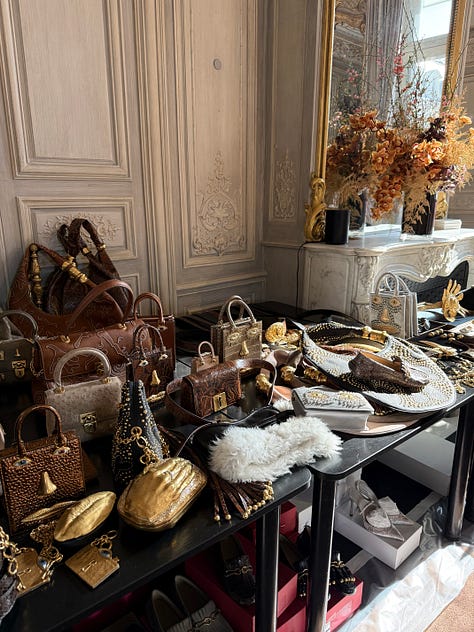
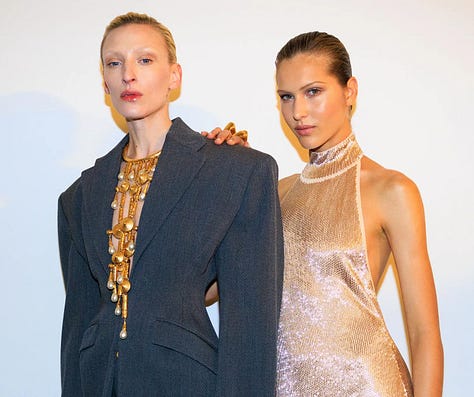

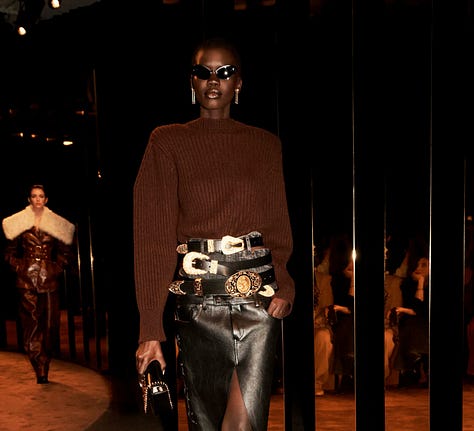
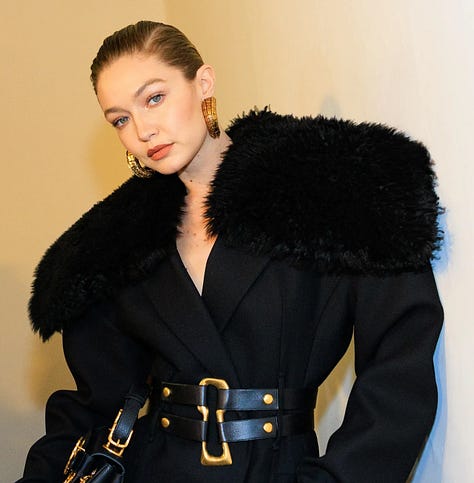
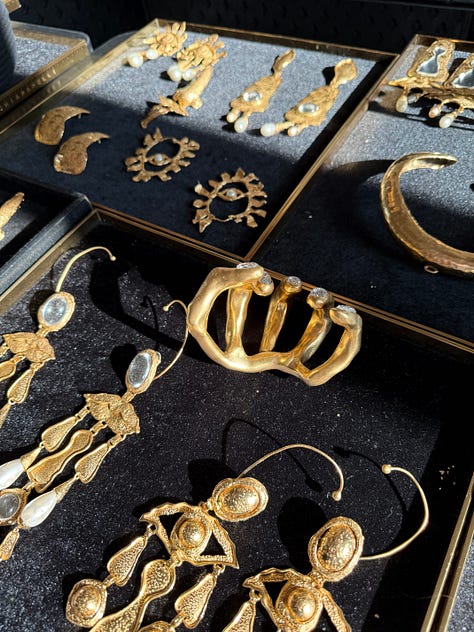
The results were striking.
Leather jackets reminiscent of corsetry were designed without restrictive elements, symbolizing empowerment and choice rather than constraint. Dramatic sleeves billowed freely, emphasizing personality over conformity, and broad shearling collars commanded presence without demanding attention.1
What the Models Say
I've had several conversations with the models who walk the runway. Nearly all expressed genuine enthusiasm about wearing Daniel’s designs, highlighting how these garments make them feel genuinely feminine, sleek, chic, and—perhaps most importantly—pretty. Feeling pretty, as they described it, wasn't superficial but deeply affirming, tied to a sense of authentic self-expression.
Daniel's vision was about celebrating personal authenticity and dignity rather than seeking external validation.
I loved the show. It wasn’t anything like women dressed up as men. Instead, there were nearly forty fashion looks all of which, if worn by a woman would exemplify beauty, femininity, strength, empowerment, and chic sophistication.
The Bigger Story
This approach resonates deeply with the biblical idea of humanity being created in the image of God—the Imago Dei. In the Book of Genesis, after Adam and Eve discovered their vulnerability and shame, it was God who compassionately clothed them. The scriptures tell us, "The Lord God made garments of skin for Adam and his wife and clothed them." This simple act carried profound significance—an animal’s life was sacrificed, marking the first instance of shedding blood for the protection and dignity of humanity.
Today, we can imagine that clothing should have the same intent: to cover our bodies for protection and warmth, but also to affirm our worth as human beings. Clothes can be extensions of our God-given uniqueness, outwardly expressing the inner beauty and creativity that each person inherently possesses.
Men, Women, and Fashion
Fashion can be a celebration of personal dignity, a joyful communication of individuality, rather than a calculated attempt to please or attract.
For men, recognizing this truth can lead to shifts in perspective. Rather than interpreting women’s fashion as primarily driven by male attention or interests, we can appreciate clothing choices as meaningful expressions of personal identity and the worthiness of the female community.
For women, I’d imagine embracing this reality could liberate them from societal pressures and expectations. Fashion becomes a way to honor one’s true self, reflecting inner worth rather than performing for external validation. Women should be free to dress authentically, confidently celebrating their identity and dignity without fear or hesitation.
Leaving Paris after the Schiaparelli show, I found myself grateful for Daniel’s artistic vision and the insight it provided. The beauty of the art form of fashion and the richness of the shapes and styles he presents are beyond question. He is one of the best in the world. But the realization that women primarily dress for themselves and other women enriches my appreciation for fashion. It reminds me to value authenticity, creativity, and dignity—core reflections of the image of God that each of us uniquely carries.
David Roseberry ☩
The Anglican
(Don’t forget. To do Lent with us, become a paid subscriber. Daily posts reflecting on biblical themes, stories, and Christian hope.)
(In describing the elements of his show, I am borrowing heavily on his show notes and the reports from the fashion reporters. I do not know this language.)
The Anglican is the Substack newsletter for LeaderWorks, where I share insights, encouragement, and practical tools for clergy and lay Christians. I’m also an author of over a dozen books available on Amazon.
If you are a Paid Subscriber, thank you! Thank you for supporting The Anglican and the ministry of LeaderWorks. If you are not a subscriber, please consider becoming one today.


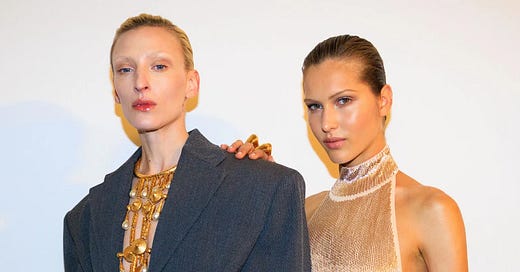



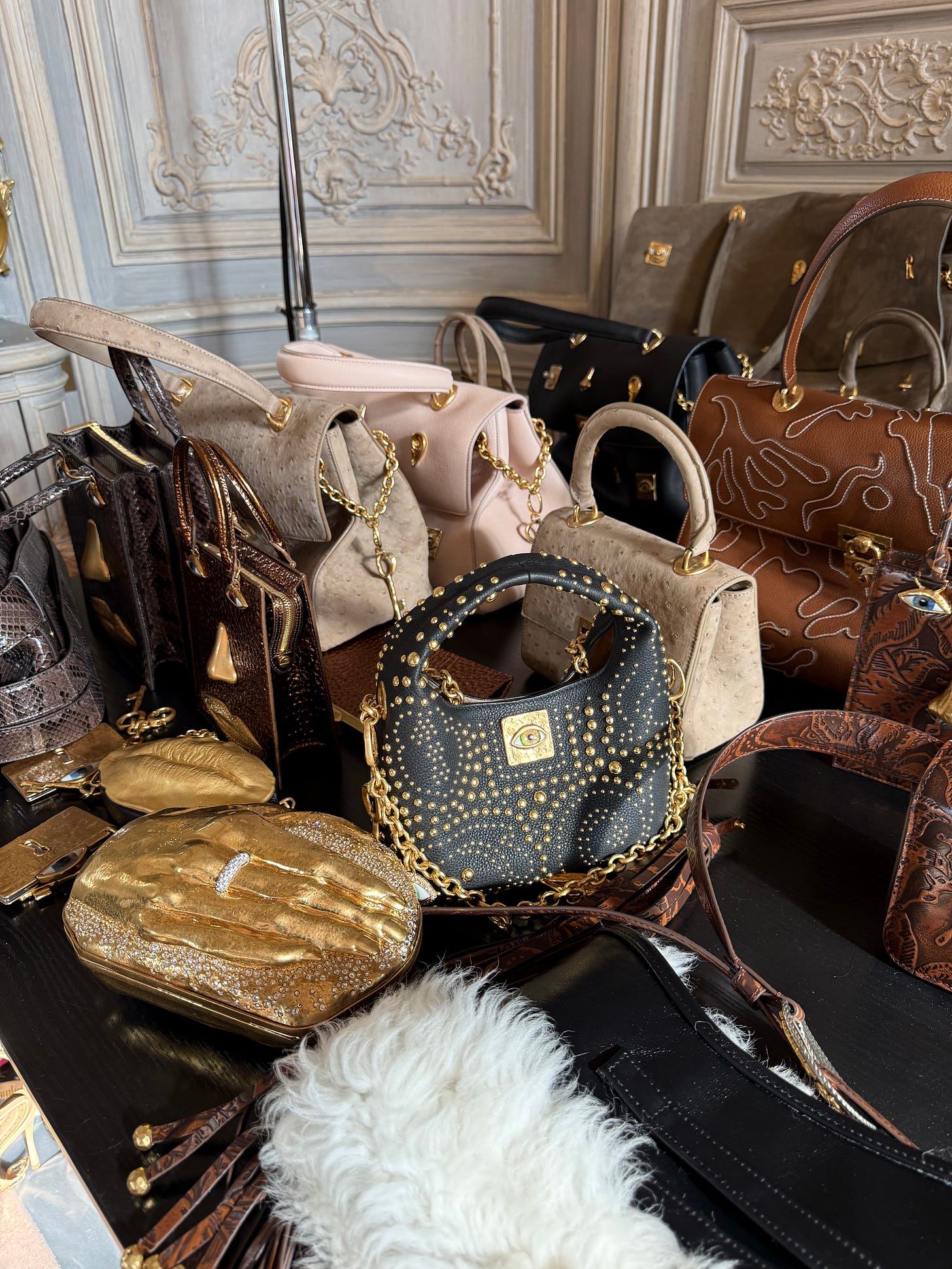

I wouldn’t know anything about that! But I’m happy to say that my wife always look fantastic.
Women can be the worst at being critical of other women and how they dress.
Great article and we are proud of Daniel and his work. Amazing talent! Deborah Kuypers